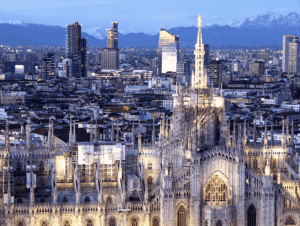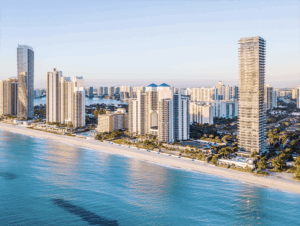Foreign investors now represent the majority of preconstruction purchases across key Miami submarkets, with Latin American buyers leading the charge.
The influx of international capital into South Florida’s condominium market has reached a defining moment: foreign buyers now control the majority of new development sales across the region’s most active submarkets, according to a comprehensive analysis by the Miami Association of Realtors.
The data, spanning a 22-month period from January 2024 through October 2025, reveals that international purchasers accounted for 52% of all presales across 66 condominium projects in Miami-Dade, Broward, and Palm Beach counties. Of the 6,931 units presold during this period, 3,620 were acquired by foreign buyers—a striking indicator of South Florida’s enduring appeal to global wealth.
Latin America Drives Demand
The composition of international buyers tells an equally compelling story. Latin American purchasers represent 86% of all foreign investment in these projects, with Colombia, Mexico, Argentina, Brazil, and Turkey emerging as the top source countries. This geographic concentration reflects both economic conditions in home markets and South Florida’s long-standing position as a safe haven for Latin American capital.
The data, compiled in partnership with leading brokerages including Fortune Christie’s International Real Estate, Cervera Real Estate, ISG World, PMG, Serhant New Development, and One Sotheby’s International Realty, builds upon preliminary findings released in July covering the first half of 2025.
Geographic Disparities Emerge
While foreign capital dominates certain markets, the distribution proves remarkably uneven across South Florida’s diverse submarkets. In Hollywood, international buyers claimed an overwhelming 76% of new development sales—the highest concentration in the tri-county area. Miami’s Brickell and Coconut Grove, along with Wynwood and Pompano Beach, each registered foreign buyer participation at 63%, while North Miami recorded 59%.
This stands in stark contrast to more northern markets. Fort Lauderdale attracted just 13% foreign buyer participation, while West Palm Beach registered a mere 7%—suggesting that international investors maintain clear preferences for Miami-centric locations with established global brand recognition.
Immigration Policy Creates Unexpected Opportunities
Speaking at The Real Deal’s Miami Real Estate Forum, industry veterans Edgardo Defortuna of Fortune International Group and Craig Studnicky of ISG World addressed how evolving immigration policies have reshaped international investment patterns. Contrary to expectations that stricter border enforcement might dampen foreign interest, the current administration’s policies have accelerated demand through the EB-5 visa program, which offers permanent residency to qualified investors.
“Demand has been incredible,” Defortuna noted. “Before, EB-5 used to be mainly Chinese or the Far East, but now the Latin American buyer really understands the process.”
This shift represents a fundamental change in the EB-5 landscape, which historically attracted predominantly Asian capital. The program’s appeal to Latin American buyers reflects both increased regional wealth and growing concerns about economic and political stability in home countries—factors that continue to position South Florida real estate as an attractive store of value and pathway to U.S. residency.
The data underscores South Florida’s exceptional position in the global real estate market, where geography, climate, tax advantages, and political stability converge to create sustained international demand—even as domestic buyers maintain strong interest in select submarkets.
Source: The Real Deal



